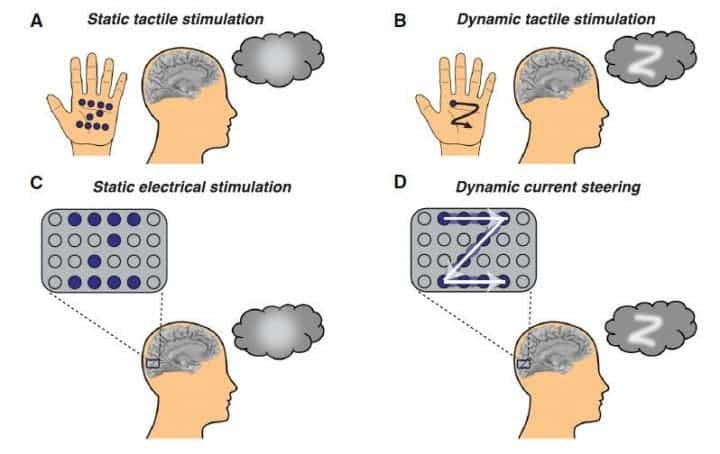
Scientists at Baylor College of Medicine in Houston zapped the visual cortex of blind volunteers with specific patterns of electricity that allowed the participants to ‘see’ shapes that were simulated on a computer.
The operating principle of the new setup, which took years to perfect through countless instances of trial and error, is similar to how cochlear implants stimulate nerves of the inner ear in order to enhance hearing.
The researchers hope that this proof of concept might one day serve as a stepping stone for more advanced implants that could restore vision.
Basically, instead of trying to restore retina or other functions in the eyes, such an approach could restore vision by delivering visual information from a digital camera.
While there’s still a long way to go before something like that could happen, the proof of concept is impressive, to say the least.
“When we used electrical stimulation to dynamically trace letters directly on patients’ brains, they were able to ‘see’ the intended letter shapes and could correctly identify different letters,” senior author Daniel Yoshor says. “They described seeing glowing spots or lines forming the letters, like skywriting.”

The research team worked with five participants, three sighted and two blind individuals. All participants had previously undergone surgery that implanted electrodes in the visual cortex, which is responsible for processing information pertaining to light that hits the retina. The sighted individuals originally had electrodes implanted for an epilepsy trial.
In order to zap letters and other shapes into the field of vision of the participants, the researchers looked to generate phosphenes (from the Greek phos, light, and phainain, to show) — the illusion of light that occurs without light actually hitting the retina.
If you ever rubbed your eyes in a pitch-black room and then started seeing tiny pricks of light, those are phosphenes right there. This phenomenon is commonly known as “seeing stars”.
The area of the visual cortex where electrodes were implanted works similarly to a map, in the sense that different regions of the visual cortex correspond to different zones in our field of vision. Some regions, for instance, process information in the upper right corner of our field of vision. Some believe if you implant enough electrodes to cover the whole cortex, one might be able to turn it into a digital computer screen.
For their study, the authors swept an electrical current across several electrodes. This sweeping pattern of electricity was translated into shapes that the participants could ‘see’.
The generated shapes were very simple. Nothing crazy for now.
“Rather than trying to build shapes from multiple spots of light, we traced outlines,” says first author Michael Beauchamp. “Our inspiration for this was the idea of tracing a letter in the palm of someone’s hand.”
Writing in the journal Cell, the authors claim that their proof-of-concept could allow the blind to regain their ability to detect and recognize visual forms. Being able to see the shape of objects in the household or that of another person could prove to be a huge leap in the quality of life.
“The primary visual cortex, where the electrodes were implanted, contains half a billion neurons. In this study we stimulated only a small fraction of these neurons with a handful of electrodes,” Beauchamp says. “An important next step will be to work with neuroengineers to develop electrode arrays with thousands of electrodes, allowing us to stimulate more precisely. Together with new hardware, improved stimulation algorithms will help realize the dream of delivering useful visual information to blind people.”


